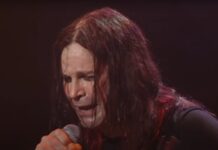U2 has been pushing the boundaries of live music for decades. From their groundbreaking 360° tour to their innovative use of technology in live performances, the Irish rock legends have never shied away from experimenting with new ways to put on concerts. Their latest project, however, has stirred some controversy with fans online. The band is charging fans $100 to watch an immersive concert film at the cutting-edge Sphere venue in Las Vegas, featuring performances from their residency at the venue.
For many fans, this price tag feels ridiculous. While the Sphere promises an incredible visual experience, critics argue that $100 is more in line with the cost of an actual concert ticket rather than a film screening. The debate raises important questions about the future of live music and the role that emerging technologies will play in shaping it.
Immersive Venues Are Changing Music
The Sphere in Las Vegas is one of the most technologically advanced venues in the world, boasting a 160,000-square-foot display area, state-of-the-art acoustics, and immersive capabilities that are changing the way fans watch and listen to concerts. U2’s residency at the Sphere, which incorporates 3D visuals, spatial audio, and other cutting-edge effects, has been praised as the future of live music. But the decision to charge $100 for a concert film, even one shown in such a high-tech venue, has left many fans questioning if it’s worth it.
This pricing strategy may be a test case for what could become a new norm in the concert industry. As venues like the Sphere become more common, and as hologram technology and artificial intelligence continue to evolve, we could see a shift in what is considered a ‘live music experience.’ There could be a world where AI-generated holograms of famous artists, both living and deceased, perform in venues around the globe. Taylor Swift or Beyoncé could “appear” in multiple cities simultaneously, while holograms of legends like Kurt Cobain or Freddie Mercury could be resurrected for performances with Nirvana and Queen. Adam Lambert could be out of a job with Queen quick if AI gets too good.
Are Hologram Concerts Coming?
The concept of hologram performances is not new, we’ve seen it with Whitney Houston and Tupac Shakur, but they’ve been few and far between. But with advancements in AI, the potential for more is growing fast. AI could be used to replicate not just the voice and appearance of artists, but also their stage presence, mannerisms, and even the ability to improvise or interact with the audience.
This could lead to a new type of concert experience where the setlist changes for every show based on the city and date, with special hologram guests even mixed in with live human performers. Dave Grohl and Krist Novoselic themselves could play “Smells Like Teen Spirit” with Kurt Cobain, and Freddie Mercury could join Queen’s surviving members.
Will Audiences Pay?
The big question is whether audiences will be willing to pay premium prices for these technologically advanced concert experiences. While U2’s $100 concert film may seem steep, it could be just the beginning of a new era where the lines between live and virtual performances blur. The success of these ventures will likely depend on the quality of the experience. A simple concert film, even one shown in a venue as impressive as the Sphere, may struggle to justify a high ticket price. However, a fully immersive, AI-driven hologram concert with dynamic elements and unique performances could become a must-see event, commanding ticket prices that rival or even exceed those of traditional live shows.
As the music industry continues to evolve, artists, promoters, and venues will need to navigate this new landscape carefully. The technology offers incredible possibilities, but it also raises questions about authenticity, value, and the future of live performance. For now, U2’s ambitious project at the Sphere serves as a fascinating case study in how far fans are willing to go—and how much they are willing to pay—for a cutting-edge concert experience.













